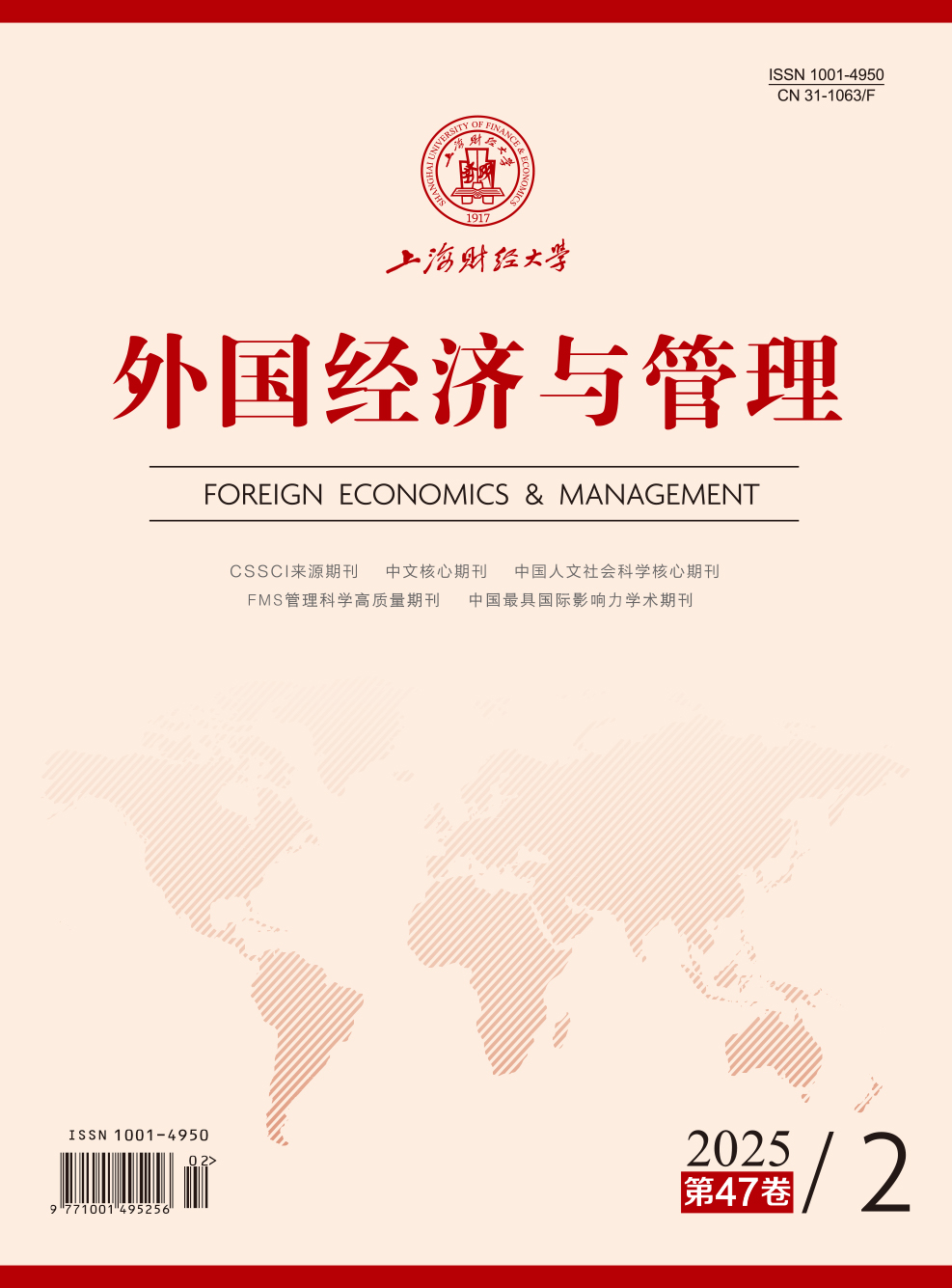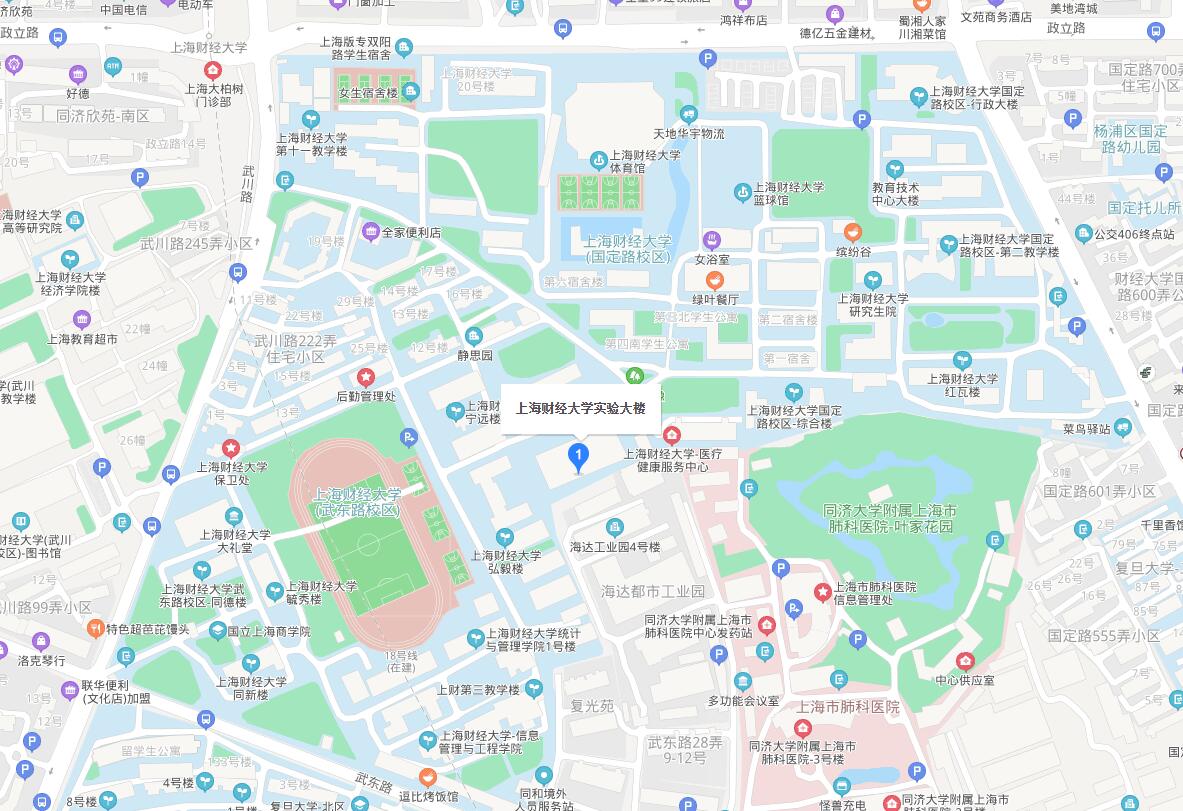随着创新网络中企业间的联系愈发紧密,企业在数字技术应用的决策选择时极易受到同群企业的行为表现与企业组间压力机制的影响。本研究以制造业高新技术上市公司为研究样本,探究了企业数字技术同群效应对企业创新模式的影响效应,以及组间压力的调节作用。结果表明:(1)数字技术同群效应能够促进企业创新模式中模仿创新与自主创新以及二者互补效应的实现,而且对自主创新的促进作用更加突出。(2)组间压力中,知识权力压力的提升将使数字技术同群效应的促进作用减弱,市场关注压力与行业竞争压力的提升能够增强数字同群效应的促进作用。(3)数字技术同群效应的促进作用在企业所在地数字基础设施建设条件良好、数字政策环境与数字金融环境优越的样本中更为突出。本文研究结论对于揭示数字技术同群效应的触发动机,拓展同群效应的影响方式与分析逻辑,指导企业如何利用数字技术同群效应与组间压力作用机制来实现企业创新模式具有启示意义。
数字技术同群效应、组间压力与企业创新模式
摘要
参考文献
1 陈庆江, 王彦萌, 万茂丰. 企业数字化转型的同群效应及其影响因素研究[J]. 管理学报, 2021, 18(5): 653-663. DOI:10.3969/j.issn.1672-884x.2021.05.003
4 郭海, 李永慧, 赵雁飞. 求同还是存异?最优区分研究回顾与展望[J]. 南开管理评论, 2020, 23(6): 214-224. DOI:10.3969/j.issn.1008-3448.2020.06.020
5 何德旭, 张昊, 刘蕴霆. 新型实体企业促进数实融合提升发展质量[J]. 中国工业经济, 2024, (2): 5-21. DOI:10.3969/j.issn.1006-480X.2024.02.002
7 贾依帛, 苏敬勤, 马欢欢, 等. 全球价值链嵌入下隐形冠军企业知识权力演化机理研究[J]. 南开管理评论, 2022, 25(3): 62-72. DOI:10.3969/j.issn.1008-3448.2022.03.007
8 李宇, 李明澈. 企业二元式创新的知识权力基础及影响实证研究[J]. 中国软科学, 2021, (1): 184-192. DOI:10.3969/j.issn.1002-9753.2021.01.018
11 苏涛永, 孟丽, 张金涛. 中国碳市场试点与企业绿色转型: 作用效果与机理分析[J]. 研究与发展管理, 2022, 34(4): 81-96.
12 王旭, 褚旭. 制造业企业绿色技术创新的同群效应研究——基于多层次情境的参照作用[J]. 南开管理评论, 2022, 25(2): 68-79. DOI:10.3969/j.issn.1008-3448.2022.02.008
13 尹志锋, 杨椿, 闫琪琼, 等. 知识产权司法保护能否促进企业自主创新?[J]. 科学学研究, 2023, 41(1): 156-167. DOI:10.3969/j.issn.1003-2053.2023.01.017
14 张勋, 杨桐, 汪晨, 等. 数字金融发展与居民消费增长: 理论与中国实践[J]. 管理世界, 2020, 36(11): 48-62. DOI:10.3969/j.issn.1002-5502.2020.11.005
15 张振刚, 李云健, 余传鹏. 利用式学习与探索式学习的平衡及互补效应研究[J]. 科学学与科学技术管理, 2014, 35(8): 162-171.
16 郑刚, 邓宛如, 胡珊. 创新者的“模仿”?在位企业反应型知识搜寻[J]. 科学学研究, 2021, 39(4): 652-661. DOI:10.3969/j.issn.1003-2053.2021.04.009
17 Blichfeldt H, Faullant R. Performance effects of digital technology adoption and product & service innovation–A process-industry perspective[J]. Technovation, 2021, 105: 102275. DOI:10.1016/j.technovation.2021.102275
18 Ciarli T, Kenney M, Massini S, et al. Digital technologies, innovation, and skills: Emerging trajectories and challenges[J]. Research Policy, 2021, 50(7): 104289. DOI:10.1016/j.respol.2021.104289
19 Desai V M. Imitate others? Not if we have the chance: Competitive differentiation in medical malpractice insurers' pricing decisions under uncertainty[J]. British Journal of Management, 2014, 25(3): 589-606. DOI:10.1111/1467-8551.12039
20 DiMaggio P J, Powell W W. The iron cage revisited: Institutional isomorphism and collective rationality in organizational fields[J]. American Sociological Review, 1983, 48(2): 147-160. DOI:10.2307/2095101
21 Duysters G, Lavie D, Sabidussi A, et al. What drives exploration? Convergence and divergence of exploration tendencies among alliance partners and competitors[J]. Academy of Management Journal, 2020, 63(5): 1425-1454. DOI:10.5465/amj.2017.1409
22 Forman C, van Zeebroeck N. Digital technology adoption and knowledge flows within firms: Can the internet overcome geographic and technological distance?[J]. Research Policy, 2019, 48(8): 103697. DOI:10.1016/j.respol.2018.10.021
23 Greve H R. A Behavioral theory of firm growth: Sequential attention to size and performance goals[J]. Academy of Management Journal, 2008, 51(3): 476-494. DOI:10.5465/amj.2008.32625975
24 Greve H R, Baum J A C, Mitsuhashi H, et al. Built to last but falling apart: Cohesion, friction, and withdrawal from interfirm alliances[J]. Academy of Management Journal, 2010, 53(2): 302-322. DOI:10.5465/amj.2010.49388955
25 Karp R. Gaining organizational adoption: Strategically pacing the position of digital innovations[J]. Academy of Management Journal, 2023, 66(3): 773-796. DOI:10.5465/amj.2020.0548
26 Lieberman M B, Asaba S. Why do firms imitate each other?[J]. Academy of Management Review, 2006, 31(2): 366-385. DOI:10.5465/amr.2006.20208686
27 Makadok R. Can first-mover and early-mover advantages be sustained in an industry with low barriers to entry/imitation?[J]. Strategic Management Journal, 1998, 19(7): 683-696. DOI:10.1002/(SICI)1097-0266(199807)19:7<683::AID-SMJ965>3.0.CO;2-T
28 Moreira S, Klueter T M, Tasselli S. Competition, technology licensing-in, and innovation[J]. Organization Science, 2020, 31(4): 1012-1036. DOI:10.1287/orsc.2019.1337
29 Papazoglou M E, Spanos Y E. Bridging distant technological domains: A longitudinal study of the determinants of breadth of innovation diffusion[J]. Research Policy, 2018, 47(9): 1713-1728. DOI:10.1016/j.respol.2018.06.006
30 von Krogh G, Roberson Q, Gruber M. Recognizing and utilizing novel research opportunities with artificial intelligence[J]. Academy of Management Journal, 2023, 66(2): 367-373. DOI:10.5465/amj.2023.4002
31 wael AL-khatib A. Drivers of generative artificial intelligence to fostering exploitative and exploratory innovation: A TOE framework[J]. Technology in Society, 2023, 75: 102403. DOI:10.1016/j.techsoc.2023.102403
引用本文
杨震宁, 童奕铭. 数字技术同群效应、组间压力与企业创新模式[J]. 外国经济与管理, 2025, 47(2): 135-152.
导出参考文献,格式为:





 2778
2778  3480
3480

